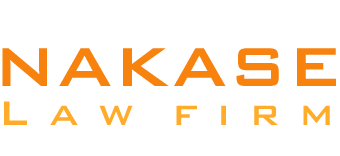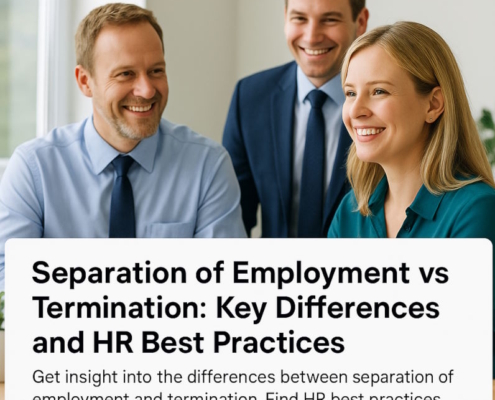Introduction
Employers provide their workers with a wage statement, also known as a pay stub, at the end of each pay period, which details the computation of their salary. Employees’ rights to information at the time of payment are governed by particular legislation in California.
These wage statement rules, in general, give workers the right to a precise record of their working hours, pay rate, compensation received, and withholding from their total salary. In order for employees to have a wage payout record after cashing their paychecks, the law is set up to permit them to retain that statement.
This article covers “What is a wage statement?” and California’s pay stub regulations in further detail, as well as the legal requirements that firms must adhere to when paying employees.
1. California’s Mandatory Wage Statement Form
Employers in California are required by law to give their workers an official wage statement at the time of payment. Wage statements must be accurate & itemized according to the law. Irrespective of whether the earnings are paid by check, cash, or direct deposit, the statement needs to be provided.
Wage statements often appear on perforated paper, either right above or beneath a paycheck, making it simple for employees to remove and store them. Employees may also receive it as a distinct document.
1.1 The Information on Wage Statements and Pay Stubs
A wage statement or pay stub must, at the very least, contain all of the following details, if any:
- Dates. In addition to stating the date of issuance, the salary statement must specify the interval of dates it covers.
- Gross Pay: The complete amount of an employee’s earnings before any adjustments are made is known as their gross pay. It covers all wages as defined under California law. Below is an explanation of what “wage” means.
- Total number of hours. The total number of hours worked by the employee must be listed by the employer on the wage statement. However, if the employee is “free” from this requirement under California law and their remuneration is based only on their wage, then this data is not necessary.
- Hourly rates. It is required that the wage statement include all relevant hourly rates that were in force during the period of pay. The relevant number of hours performed at every hourly rate has to be mentioned if the staff member worked at different rates within the pay period (for example, a recent rise).
- Deductions. On an employee’s pay stub, each deduction must be listed separately. Later on, we’ll go over typical deductions in more detail.
- Net Pay. The sum of a worker’s total salary, less any applicable deductions, is their net pay. It basically refers to the worker’s take-home salary.
- Personal Info. Certain details that can be used to uniquely identify the employee, such as the worker’s name and the final four digits of their Social Security number, must appear on the pay stub. The wage slip must contain the final 4 digits of the employee’s other identifying number if they are without a Social Security number.
- Information about the employer. On the pay stub, the employer’s address and name must appear. In the event that the business owner is a farm labor contractor, the address and name of the legal organization that hired the worker must also be included on the salary statement.
Understanding “What is a wage statement?” also means knowing that it covers all forms of wages defined under California law, as mentioned above. These guidelines have a number of exclusions, and some personnel are subject to further obligations. Next, we shall examine those.
1.2 The Meaning of “Wages”
If you have ever asked yourself, “What is a wage statement?” it’s essentially your personal paycheck breakdown. The employee’s gross salary, which includes any compensation that California law considers to be a “wage,” must be included on their wage statement. A wage is defined under California law as compensation for an employee’s labor. In this sense, labor refers to any work or services rendered to an employer, not merely manual labor.
If you are an employee/employer in California, knowing the answer to “What is a wage statement?” may protect you from disputes and ensure adherence to the labor laws of the state.
The term “wage” is construed liberally in California. Therefore, all kinds of compensation for labor are considered wages, including:
- Fixed Salary,
- Hourly pay,
- Commissions,
- Payments based on piece rate,
- Project-based payments
Benefits that an employee receives as part of their pay, such as cash, lodging, board, vacation pay, clothing, and sick pay, are also included in their wages.
1.3 List of Deductions
An employee’s pay stub or wage statement must show all deductions. Depending on the particular circumstances of each employee, the sorts of deductions can differ; however, they often consist of:
- Federal income taxes;
- Income taxes at the state and local levels;
- FICA taxes, which include Medicare and Social Security levies;
- State insurance for disabilities;
- Health coverage; and
- Contributions to retirement.
Deductions may be combined and displayed as just one thing if the employee has requested them in writing.
Regarding their pay stubs or wage statements, certain employees are governed by different regulations. These exclusions make an effort to take into consideration the specifics of the employee’s compensation or the type of employment arrangement.
2.1. Employees on a piece rate
Some workers receive compensation based on their job, task, or the quantity of work they complete. We refer to these people as piece-rate workers. The following details must be included individually on the pay stub for employees who receive compensation on the basis of piece rate.
- The number of units earned at a piece rate.
- The relevant piece rate.
Additionally, piece-rate workers are entitled to a distinct record of their compensation for time spent on tasks unrelated to their main production responsibilities. Piece-rate workers are particularly entitled to receive at least a minimum salary for the following tasks:
- Times of rest and recuperation; and
- Time spent not being productive (nonproductive)
When piece-rate workers are working under their employer’s supervision yet are involved in an activity unrelated to their pay, this is known as nonproductive time.
Generally, the rate per hour for such groups is the greater of the relevant minimum wage or the average hourly rate of the employee. It’s essential that piece-rate employees receive this payment in addition to their salary for piece-rate work.
Consequently, piece-rate workers need to be compensated more for their 10-minute rests and idle time. Similarly, if an employee skips a mandatory meal or rest period, they have the right to an additional hour of pay for the missing rest period and another hour for the skipped meal breaks.
Employees who get this kind of remuneration are entitled to additional information on the pay stub because it is paid at a rate other than their standard piece rate:
- The total number of hours the worker spent during periods of compensable rest and recuperation;
- Total hours of recoverable nonproductive time spent by the employee throughout the pay period;
- The rate by which these hours are compensated; and
- The total earnings paid during recovery, rest, and nonproductive periods when California law mandates them.
Either the employer’s reasonable estimates or actual work records can be used to determine the quantity of nonproductive time.
2.2. Employers of Temporary Services
Temporary assistance employers are companies that enter into agreements with clients or consumers to provide people to carry out specific tasks. The employees are frequently referred to as temps, and these are commonly known as temp agencies.
These companies should give their workers further details because they frequently charge different prices for various tasks. Employers of temporary workers must disclose the hourly rate and total hours spent for each temporary work assignment.
2.3. Exception for Home Services
People hired by residential home owners or occupants to perform personal services related to home ownership, upkeep, or use are often exempt from California’s wage statement regulations. However, those services must have nothing to do with the company of the owner or occupant.
This “home services exception” covers both contractors hired to fix or renovate a home and those who provide child care. Plumbers, roofers, carpenters, house painters, & other such workers may be considered employees (as opposed to independent vendors) of the owner of the property or occupant who engaged them under California law.
3. Maintaining Documents & the Right to Review Them
Employers are required under California law to maintain a copy of their employees’ salary statements. The “copy” could be a different printout of the exact same statement if it were created by a computer.
The copy must be retained on file by the employer for a minimum of three years. The employee’s workplace or an administrative office in the jurisdiction of California must retain the copy.
Both present and past employees are entitled to view and obtain copies of their previous pay stubs. Employers are allowed to charge employees the fair cost of supplying a copy upon request.
As soon as feasible, but not later than twenty-one days after the request is made, employers are required to comply with a former or current employee’s request to view and copy wage statements. Irrespective of whether the demand is made verbally or in writing, this deadline is applicable.
4. How Frequently Regular Wage Statements Need to Be Issued
Every time a company pays salaries, or a minimum of semimonthly (two times a month), salary statements must be given. It is more convenient for most businesses to include a pay slip with every wage payment. So, it is worthwhile to examine more closely when wage payments are required by law.
Employers are required to pay most workers at least twice a month on prearranged dates. The company must publish a notice indicating the time, place, and day when staff members can be paid, and those times must be consistent.
It is at the discretion of employers to make wage payments more regular. There are some key regulations that they must follow, no matter what the frequency of payments to the staff is:
- Wages need to be paid by the 26th of a given month, at the latest, if they are earned within the first and fifteenth day of that month.
- Before or on the tenth day of the subsequent month, any salaries earned during the latter part of the month have to be paid.
Although salaries will be restricted to what the company reasonably believes they owe, employers will still have to pay their workers even if they fail to turn in their timecards on time.
Employers have the right to pay their workers on the next business day if their payroll falls on an official holiday and their office is closed.
These guidelines have a few exceptions, which are discussed in greater depth below. Furthermore, since the focus of this paper is wage statements, final wages—which are subject to various requirements—are not covered.
By understanding “What is a wage statement?” you open the door to understanding how California safeguards worker rights and ensures accurate payment practices.
4.1. Unusual Hours and Overtime
Employers may find it more challenging to determine overtime pay than other forms of compensation. This also applies to any pay received in addition to an employee’s regular labor.
Therefore, all wages received for work beyond the ordinary work period may be given on the next scheduled payroll period, according to California law.
4.2. Workers Who Are Exempt
Under federal law, employees who are deemed “exempt” are governed by somewhat different regulations. A worker who holds a position exempt from a particular set of wage and hour regulations is known as an exempt employee.
To ascertain whether a person is an exempt worker under federal law, there are often three straightforward requirements:
- Minimum wage. At least double the minimum wage (federal) for full-time work must be paid to the employee.
- Jobs that are white-collar. The employee’s main responsibilities must be executive, professional, or administrative duties.
- Autonomous judgment. The application of discretion & independent judgment must be part of the employee’s job responsibilities.
The employee will often be categorized as “exempt” if all three conditions are satisfied. An employee is only eligible for payment once a month if they have been properly recognized as exempt.
Before or on the 26th day of every month, that payment must be made. The entire month’s salary for the employee—including the part that hasn’t been fully earned by the worker between the 26th day of the month and the close of the month—must be included.
Unless the agreement between the parties specifies a different norm, overtime must be given by the 26th day of the subsequent calendar month if an exempt worker is entitled to it for working more than 40 hours per week.
Rarely, employees who are deemed “exempt” by state law but not federal law are required to receive their paychecks within 7 days of the end of their payroll period (monthly).
Employers can, of course, decide to pay exempt workers more often than once per month.
4.3. Employees in Unions
If a contract of work/employment covers employees and specifies wage arrangements that are different, those terms will take precedence over the pay periods regulations that we described. Unionized workers should always refer to their collective bargaining agreement when figuring out their pay & schedules.
4.4. Commissions on Sales
One form of payment made to an individual for services related to sales is a commission. The amount of the employee’s compensation in a commission-based system is determined by the number of units or the value of the item sold.
Sales commissions are a form of compensation. However, until the rewards have been completely “earned,” they are not due to the employee.
The provisions of the commission contract specify what needs to happen prior to a commission being earned. The commission is regarded as a wage once those requirements are met, and the business is legally required to pay it in the same manner as they would a normal wage.
Therefore, earned commissions are governed by the same regulations as ordinary wages: unless a special circumstance occurs, the majority of commissions must be given in full at least twice a month on dates that the company has specified in advance.
4.5. Workers on Temporary Service (Temps)
The regulations governing temporary service personnel (temps) differ slightly from those governing regular employees.
An individual who works for an organization that allocates them to provide services for various businesses is known as a temporary services worker. An employee is no longer regarded as a temporary services worker if they work for a certain employer for more than ninety days.
In general, temporary workers are entitled to weekly compensation. However, according to the specifics of their jobs, employees may be eligible for daily compensation in some circumstances.
4.6. Workers on Farms
Farm labor contractors are required to pay their employees at least once per week. The agricultural labor contractor must choose a business day in advance for that pay day to occur.
The employee’s entire salary up until and including the 4th day prior to their payday must be included in their payment.
4.7 Workers in Agriculture
Special regulations apply to workers engaged in horticultural, viticultural, or agricultural endeavors if their employer covers their boarding and accommodation. Typically, they are required to get paid once every calendar month. All earnings up to the normal paycheck must be included in that payment.
The employee’s pay date must be predetermined by the company. Payrolls cannot be separated by more than thirty-one days.
4.8. Workers in Stock and Poultry
If their company provides their boarding and accommodation, workers engaged in stock and poultry rearing are subject to additional regulations. Usually, they are only required to get their pay once every calendar month. All earnings up to the normal paycheck must be included in that payment.
The employee’s pay date must be predetermined by the company. Payrolls cannot be separated by more than thirty-one days.
4.9. Domestic Service Providers in the Home
If the employer provides boarding and lodging for domestic service workers, they are subject to additional regulations. Usually, they are required to get paid once a month. All wages earned up to the normal payday must be included in that cash flow.
In advance, the company must specify the employee’s pay date. A pay period of 31 days cannot elapse between two consecutive paychecks.
4.10. Car Salesmen
The majority of auto salespeople get paid on a commission basis. The regulations governing those commissions differ from those governing other types of payment.
Car commissions for sales must be paid once a month on a day the employer has pre-designated as the normal payday if the company holds a California Department of Motor Vehicles dealer license.
However, if the auto salesperson is covered by a collective bargaining contract that specifies the date of salary payment, that agreement will typically govern when wages are due.
4.11. Workers on Strike
Wages earned but not yet paid must be given on the following regular payday when any of the staff members go on strike. The strike prevents employers from lowering or taking money out of employees’ paychecks.
5. The Wage Statement Fine for Inaccurate or Missing Pay Stubs
When two conditions are met, California law permits workers to sue their employers for providing false or incomplete wage statements:
The employee was hurt as a result of the employer’s willful and deliberate failure to provide the categorized wage statement exactly the way required by law.
We shall now examine the exact legal significance of these two points in more detail.
5.1. “Intentional and Knowing” Noncompliance
A deliberate and planned failure is a violation that cannot be justified by an employer’s good-faith error in law. In order to claim a legal error, the employer must demonstrate that the statute’s legal specifications were ambiguous or unresolved. Relying on an error of fact requires that the employer’s actions were fair at that point and backed up by some proof.
An accidental error is not considered a knowing & intentional failure. The incoherent wage statement is most likely not intentional if, for instance, the employer was unaware that the pay stub’s ink had smeared during printing. A court may conclude that the employer violated California’s pay stub legislation with knowledge and intent if, on the other hand, the company handed the worker the pay stub despite being aware of it.
If a single clerical error causes a violation, employers who prevent errors by implementing rules or procedures to ensure compliance with California’s wage statement requirements are unlikely to commit a knowing and purposeful violation. Employers are more inclined to perpetrate knowing and willful violations if they lack such a policy and consistently violate the wage statement legislation.
5.2. What Constitutes “Injuries” for Employees
Only in the event of an injury to the employee may the wage statement fine be collected. There are two situations in which an employee may “suffer an injury.” First, when a company willfully and consciously neglects to provide any pay statement whatsoever, an employee is inevitably harmed.
Second, where an employer gives a pay statement but leaves out or misrepresents a minimum of one of the following categories of information, the worker is harmed:
- How much was paid in gross or net salaries in the pay period?
- The total number of hours, assuming the worker is not exempt.
- If the employee receives compensation on a piece-rate basis, the quantity of piece-rate items earned in the pay period;
- A breakdown of every deduction taken out of gross pay, with the disclaimer that the business may combine deductions that the worker requests in writing;
- Dates that are part of the pay period;
- All relevant hourly rates that were in force during the pay period, along with the number of hours the employee worked at each rate;
- The name and address of the employer; or
- The employee’s name and just the final four digits of their social security number, or a worker identification number that isn’t an SSN.
Importantly, in order for an employee to be considered “injured” for these purposes, they must be unable to quickly and easily determine the missing details from their salary statement alone. For the reason of the wage statement penalty, this indicates that the employee has been “injured” if they must consult additional paperwork or information in order to locate one of the categories of information mentioned above.
5.3. Wage Statement Penalty Cost
The employee can get the higher of the following if they are eligible for a wage statement penalty:
- $50.00 for the first pay period during which the infraction takes place;
- $100.00 up to a maximum of $4,000.00 for each additional period of pay in which the offense takes place;
- or the real damages suffered by the employee, if any
Employees who sustain injuries are also eligible for reimbursement for the expenses and legal fees they paid to pursue a remedy. However, employees who sue their company for a pay statement violation alone have no right to punitive damages because that’s already a penalty.
5.4. The “Actual Damages” of the Employee
Employees may be entitled to compensation for the “actual damages,” as was previously mentioned. The injury that the employee actually experienced as a result of not receiving a salary statement is referred to as actual damages. The harm must have been caused by the employer’s deliberate and knowing failure to furnish a wage statement with the necessary information, just like with penalties in general.
When important pay stub data is erroneous, actual damages may result, necessitating effort and financial investment on the part of the employee to create a correct record of hours performed and wages due. Another instance of noncompliance that could result in real harm is when an employee reports fewer hours worked than they actually did. This is because the worker may use the information to incorrectly determine how much they are entitled to in wages.
Additional injuries that could result in real damages include:
- The probable reason for not receiving overtime compensation,
- Employee uncertainty about whether they got all of their due pay,
- The cost and difficulty of reestablishing pay records, and
- The cost of making workers perform mathematical calculations to determine whether their pay actually reflected the number of hours they put in
The very low threshold needed to demonstrate actual damages may be met by depriving workers of the data necessary to assess whether wages & overtime were paid correctly. However, the absence of necessary information on a pay stub doesn’t always mean that the employee has incurred harm.
Example: When an employee’s pay slip displays both normal and overtime hours, but does not sum them together to display their total hours labored, the time required to do so does not amount to “actual damage.” The employee’s compensation would be restricted to the amounts of the statutory penalties.
5.5. Further Penalties
Employers may also face civil punishment in addition to California’s primary wage statement penalty if any of the following take place:
- The company does not give a pay statement to the worker at all, or
- The employer neglects to maintain the necessary wage payment documents mentioned in Chapter 3.
A civil fine of $250.00 for each employee for a first infringement and $1,000.00 for each employee for any subsequent violation may be imposed by the Labor Commissioner in either of those situations. A wage statement infraction can be quite expensive for companies because such penalties are on top of the other penalties mentioned above.
Interestingly, a penalty can be imposed for either of those two offenses without requiring evidence of knowing and intentionality. However, the Labor Commissioner may choose not to apply the penalty if the business can demonstrate that the mistake was unintentional and only occurred once. A violation that is unintentional or the consequence of a clerical error is called an unintended violation. Generally speaking, a misunderstanding of the law is insufficient to demonstrate that a breach was unintentional.
These fines are often due to the State of California. With a case pursuant to the Private Attorneys General Act, an employee may, nevertheless, be able to collect as much as twenty-five percent of the penalty. We refer to these claims as “PAGA.”
An employee can file an action in civil court against their company in order to bring a PAGA claim. However, to accomplish this, the worker must first adhere to specific protocols, which are outlined in the Labor Code’s sections 2698 to 2699.5.
In addition to reasonable legal expenses and litigation costs, the employee may receive a quarter of the penalty owed under the Act if they prevail. Many lawyers accept these types of matters without charging up front on the basis of contingency.
However, if additional employees suffered the exact same pay stub infringement as the employee, the employee may be able to seek a class action solution even in cases where PAGA is not applicable. When a company violates California’s pay stub legislation, an employee can seek all available remedies with the assistance of a California employment attorney.
6. Recovering Damages for Violations by an Employer
Employees have three main options for seeking redress when their employer breaches California’s wage & hour laws:
- Through informal dispute resolution with the employer,
- By bringing legal action in court, or
- Through filing an administrative action for penalties and overdue pay.
Naturally, the particular circumstances of each employee will determine the best line of action in resolving a wage dispute. Before making a decision, it’s usually an excellent move to consult a lawyer.
6.1. Filing Deadline
Claims based on underpaid wages or erroneous wage statements often expire, so it’s essential to move quickly. We refer to this time frame as a statute of limitations. The kind of claim the employee makes will determine the appropriate statute of limitations.
Claims for damages for wage statement breaches typically need to be submitted within a year after the infraction. Within three years following the alleged infraction, a lawsuit or claim demanding unpaid and late-paid compensation must be filed. The statute of limitations is 4 years if the employee is trying to enforce an employment agreement in violation.
Sometimes, litigants file a wage and hour action under California’s Unfair Competition Law in an attempt to prolong the statute of limitations. You have four years to file those claims. However, in order to avoid depending on this type of claim in the event that it proves to be inapplicable, it is often preferable to make claims as soon as feasible.
The next time you check your wage statement, remember that “What is a wage statement?” is not just a question; it is the key to your understanding of financial transparency.
6.2. It’s Illegal to Retaliate
Workers are entitled to bring the matter to the notice of their employer and demand complete adherence to their pay rights if they are not provided with correct wage statements that are required by law. When workers ask for their salaries to be paid on time, employers are legally forbidden from taking retaliatory action.
Employees who file a complaint regarding a violation/breach of their wages entitlement to a government agency or launch a lawsuit in the court of law are protected against all acts of retribution. Workers who exercise their rights cannot be mistreated, punished, or fired unfairly.































